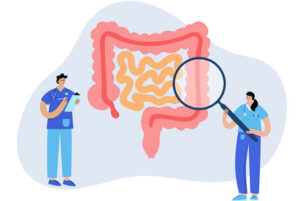
When the trademark throbbing from a migraine finally lifts, the relief is profound. But for many people regularly stricken with these potentially debilitating headaches, their distress isn’t over just because the pain ends. Instead, a distinct phase of migraine called the postdrome leaves them feeling achy, weary, dazed, and confused — symptoms eerily similar to another affliction altogether.
Dubbed the “migraine hangover,” this constellation of post-headache symptoms is remarkably common, following up to 80% of migraine attacks, according to research published in Neurology. Scientists are increasingly turning their focus to this previously underrecognized component of migraine, according to Dr. Paul Rizzoli, clinical director of the Graham Headache Center at Brigham and Women’s Faulkner Hospital.
“Not knowing it’s an accepted part of migraine, patients come up with some creative ways to tell us about their postdrome symptoms — they feel washed out, their head feels hollow, or they feel like they have a hangover but weren’t even drinking,” Dr. Rizzoli explains. “Until recent years, science hadn’t paid attention to this facet of the syndrome, but it’s a natural progression from focusing on the problem as a whole.”
The four phases of migraine
The typical migraine can be a wretched experience, with stabbing head pain joined by nausea, brain fog, and extreme sensitivity to light and sound, among other symptoms. Nearly 16% of Americans are affected by migraines, which strike women at nearly twice the rate as men. Severe headaches are also one of the top reasons for emergency room visits.
Spanning hours to days, migraine headaches can include four clear phases, each with its own set of symptoms. The pre-pain prodrome and aura phases may include various visual changes, extremes of irritability, difficulty speaking, or numbness and tingling, while the headache itself can feel like a drill is working its way through the skull.
Lingering migraine symptoms: The hangover
After that ordeal, one to two days of postdrome symptoms may sound tame by comparison, Dr. Rizzoli says. But the lingering fogginess, exhaustion, and stiff neck can feel just as disabling as the headache that came before. Since migraine is believed to act as a sort of electrical storm activating neurons in the brain, it’s possible that migraine hangover results from “some circuits being electrically or neurochemically exhausted,” Dr. Rizzoli says. “It just takes time for the brain to return to normal function, or even replace some chemicals that have been depleted in the process.”
But much is still unknown about migraine postdrome, he adds, and research has found no consistent association between factors such as the type of migraine medication taken and duration of any subsequent hangover.
Tips to ease a migraine hangover
Following these steps regularly may help you ward off lingering symptoms after a migraine:
- Drink plenty of water.
- Practice good headache hygiene by maintaining regular eating and sleeping patterns and easing stress.
- If possible, try to lighten your load for next 24 hours after the headache pain ends.
- Stop taking pain medicine once the headache is gone.
For migraine hangover sufferers so distracted by their inability to return to normal activities even after migraine pain lifts, physicians sometimes prescribe medications typically meant for conditions such as memory loss, depression, or seizures. While they may differ from the usual drugs used to treat migraine, some of these medicines have been observed to help postdrome syndrome or act as a preventive for headache.
“Think of the headache you just had like you’ve run a marathon or done some other stressing activity,” Dr. Rizzoli says. “Your body needs to recover, which is not the same as staying in bed with the lights off. Ease up, but stay functional.”
About the Author

Maureen Salamon, Executive Editor, Harvard Women's Health Watch
Maureen Salamon is executive editor of Harvard Women’s Health Watch. She began her career as a newspaper reporter and later covered health and medicine for a wide variety of websites, magazines, and hospitals. Her work has … See Full Bio View all posts by Maureen Salamon



